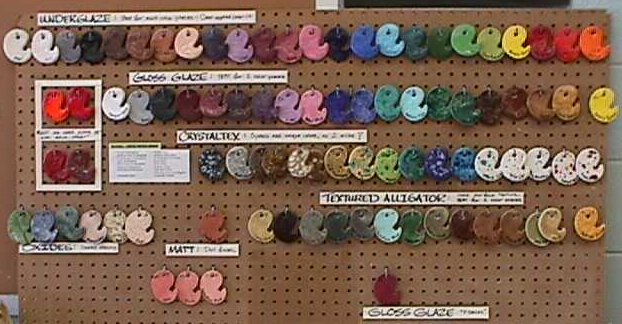 |
Everything I needed to know
to pass the proficiency test, I learned in Art class . . .
. . . in other words, everything I needed to know to pass Art class, I learned in preparation for the Ohio Proficiency Test! |
![]()
ARTactivities
and assignments at Minford High School that enrich and support the five
areas tested on Ohio's Proficiency Test. . .
Let's look at the five areas
of the Proficiency Test and the Art
projects we do that relate to the proficiency subject area . . .
Mathematics
Science
Government
Reading
Writing
![]()
M.C. Escher and Tessellations

Nikki Higgins |
Art I classes learn to manipulate the 3 regular polygons (square, hexagon and equilateral triangle) using translation, rotation and glide reflection. Students choose 1 method to use and create a cut paper tessellation. They also use TesselMania to create a tessellation via computer. |
TesselMania
More
about M.C. Escher
Back
to top of page
![]()
Perspective Drawing
| Art II classes use triangles and rulers to learn 1 and 2 point perspective drawing. Students must use vertical, horizontal, perpendicular, parallel and diagonal lines with vanishing points to develop an image. |

Megan Roffe |
![]()
Chuck Close Portraits

Jennifer Lundy |
Art III & IV students study the artist Chuck Close and make larger than life portraits in his checkerboard style. Students use the grid system to enlarge their digital picture and were required to retain that grid in their finished image. |
More
about Chuck Close
Back
to top of page
![]()
Chalked Stencil Design
| Art I classes use the grid system to reduce and enlarge an organic shape that is made into a stencil and used with chalk to make a design showing depth. |

Melissa Lewis |
![]()
Origami

Eric Fugate |
All students learn to fold an origami paper crane. Square paper is folded into many layers of angles, most of which are developed in symmetry. |
More
about Origami
Back
to top of page
![]()
Copper Tooling
| After Art II students develop an image on copper, Liver of Sulphur is applied to blacken the surface of the copper. The darkened surface is later rubbed with steel wool to highlight the raised areas. An acrylic spray coating is applied to seal the surface and prevent it from tarnishing. |

Kristina Hire |
![]()
Tie-Dye

Jennifer Wood |
All students enjoy dying shirts! Procion dyes are used; they are a fiber reactive dye that works through a chemical reaction that bonds the dye to the fabric. All dyes are mixed with urea, a color brightener and salt, which helps make the chemical bond. Fabrics are soaked in soda ash (sodium carbonate) to roughen the fibers so they will start to break down and accept the dye. Cotton fabric works best, especially if it's 100% cotton! |
![]()
Life Casting
| All students may opt to have their face cast in plaster. This yeilds a pressmold that they use with clay. Why does the plaster get hot as it hardens? Ask your science teacher. . . ! |

Janie Kronk |
![]()
Glazing

We have almost 100 different glazes to choose from for our ceramic pieces. |
Although we use premixed glazes, they are chemicals and must be used correctly to yeild the best results. All students must check labels for glazes dinnerware safe for use on items that will come in contact with food or beverage. Reds must be fired alone, and used alone, due to our current ventilation system. Underglazes must have clear gloss applied last for a glossy finish. |
![]()
J.S.G. Boggs
| Art III & IV students studied the art of J.S.G. Boggs, a performance artist who draws money and spends it. Although his artwork can be seen at the Smithsonian, he has been the target of the Secret Service for many years. My art students learn about counterfeiting and freedom of speech, while creating their own drawn bill within the legal limits defined by U.S. federal law. | 

Berry Bill by Lisa Vallance |
More
about J.S.G. Boggs
Back
to top of page
![]()
Artist Report

Self Portrait, 1889 Vincent Van Gogh |
Art III & IV students select an Impressionist artist to study. Several books from the Portsmouth Public Library as well as from our own high school library are placed in the art room for easy access for student research. Computer CD Roms are also available for use by students about the artists and the various art movements. |
![]()
Impressionism
| Art III & IV students write a report about an Impressionist Artist and one of their paintings. Students must explain how their chosen artist will influence their future paintings. | 
Vincent Van Gogh |
![]()